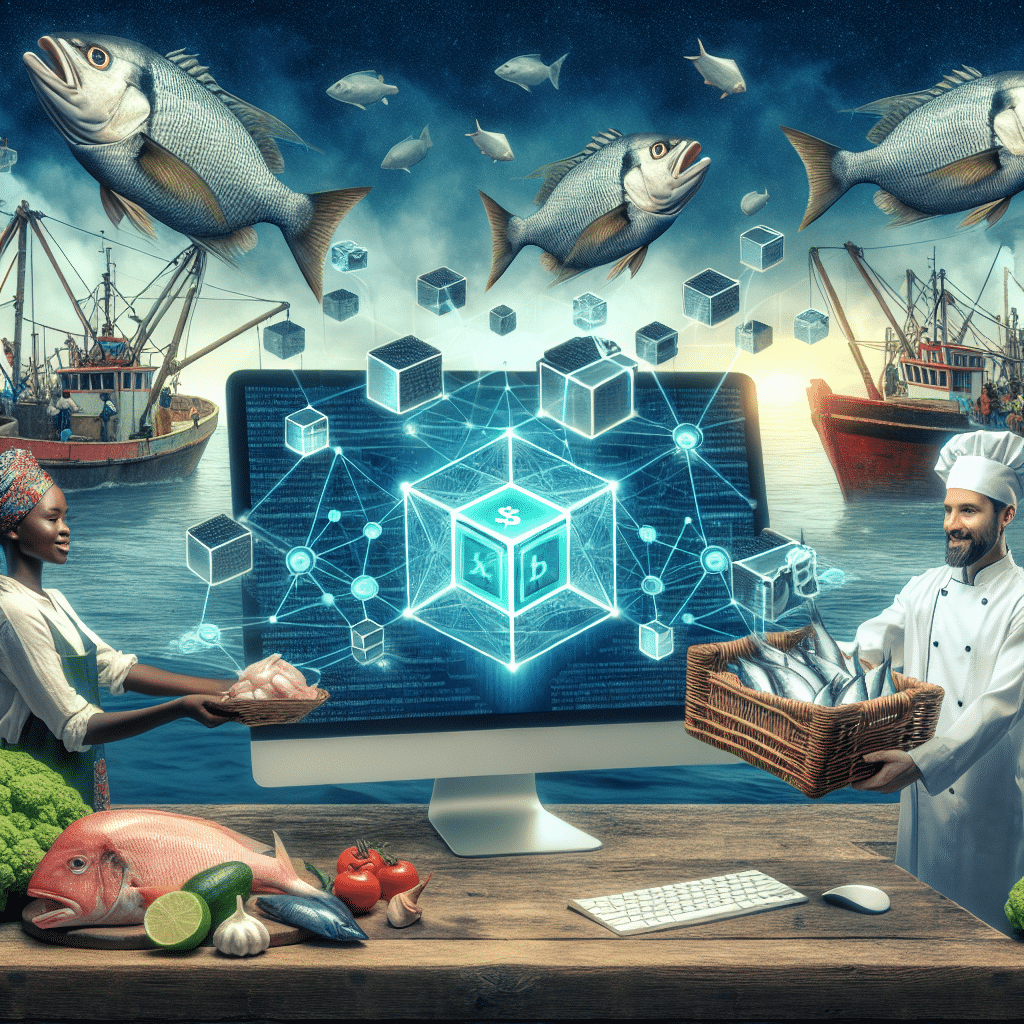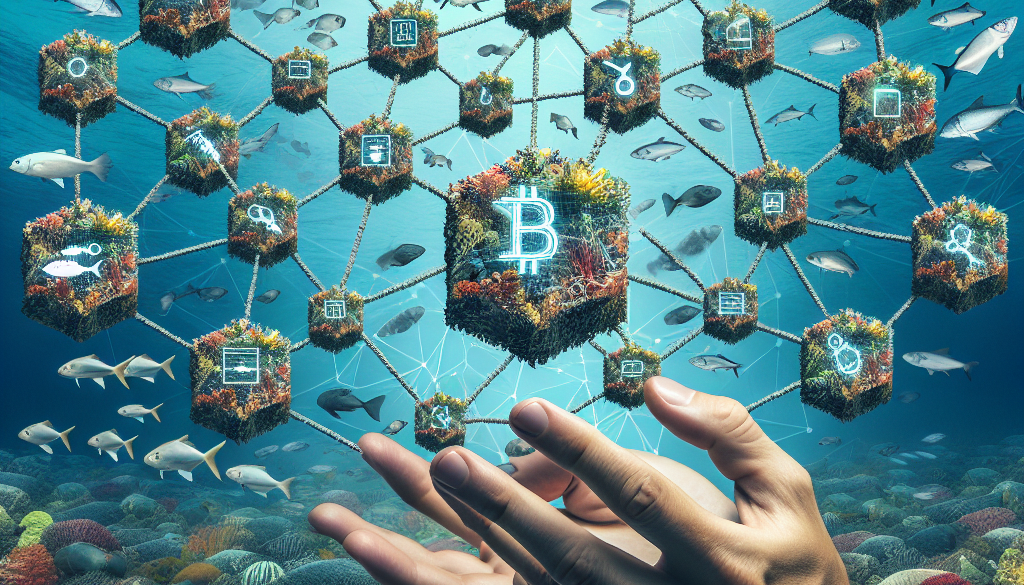Blockchain Solutions for Responsible Seafood Sourcing
-
Table of Contents
- Blockchain Solutions for Responsible Seafood Sourcing
- The Challenges of Seafood Sourcing
- Blockchain: A Primer
- Implementing Blockchain in Seafood Sourcing
- 1. Catch Documentation and Traceability
- 2. Supply Chain Monitoring
- 3. Verification and Certification
- 4. Consumer Engagement
- Case Studies and Statistics
- Challenges and Considerations
- Conclusion: The Future of Seafood Sourcing with Blockchain
- ETprotein: Enhancing Nutrition with High-Quality Protein Products
Blockchain Solutions for Responsible Seafood Sourcing

The seafood industry is a vital part of the global food supply chain, providing nutrition to billions and livelihoods to millions. However, it faces significant challenges, including overfishing, illegal, unreported, and unregulated (IUU) fishing, and supply chain inefficiencies that can lead to fraud and mislabeling. Consumers and stakeholders are increasingly demanding transparency and sustainability in seafood sourcing. Blockchain technology has emerged as a promising solution to these challenges, offering a way to trace seafood from catch to consumer with unprecedented accuracy and security.
The Challenges of Seafood Sourcing
Before delving into blockchain solutions, it’s important to understand the specific challenges that the seafood industry faces:
- Overfishing and unsustainable fishing practices threaten marine ecosystems and the long-term viability of fish stocks.
- IUU fishing contributes to overfishing, damages marine habitats, and undermines conservation efforts.
- Complex supply chains with multiple intermediaries can lead to mislabeling and fraud, making it difficult for consumers to trust the origins and sustainability of their seafood.
- Lack of transparency and traceability in the supply chain hampers efforts to enforce sustainable and ethical practices.
Blockchain: A Primer
Blockchain is a distributed ledger technology that allows data to be stored across a network of computers. This data is immutable, meaning it cannot be altered retroactively, and is accessible to all participants in the network. The key features of blockchain that make it suitable for supply chain management include:
- Decentralization: No single entity controls the data, reducing the risk of fraud and corruption.
- Transparency: All transactions are visible to network participants, fostering trust and accountability.
- Security: Cryptographic techniques ensure that data is tamper-proof and secure.
- Traceability: The provenance of goods can be tracked from origin to end-user, ensuring authenticity and compliance with regulations.
Implementing Blockchain in Seafood Sourcing
Blockchain technology can be applied to various stages of the seafood supply chain to address the aforementioned challenges:
1. Catch Documentation and Traceability
Blockchain can be used to create a secure and transparent record of each fish caught, including details such as species, location, time, and method of catch. This information can be recorded by fishers using mobile devices and QR codes, creating a digital footprint that follows the seafood through the supply chain.
2. Supply Chain Monitoring
As seafood moves through the supply chain, each transaction and transfer can be recorded on the blockchain. This includes processing, packaging, and transportation events, creating a complete history that is accessible to all stakeholders.
3. Verification and Certification
Certification bodies can use blockchain to verify the sustainability and legality of seafood products. Once a product is certified, this information is linked to its digital record, ensuring that certifications are genuine and up-to-date.
4. Consumer Engagement
End consumers can access the blockchain to verify the origins and journey of their seafood. This can be done through simple interfaces such as smartphone apps that scan product QR codes, providing a transparent and engaging customer experience.
Case Studies and Statistics
Several initiatives have demonstrated the potential of blockchain in responsible seafood sourcing:
- A pilot project by WWF-New Zealand, Sea Quest Fiji, and TraSeable Solutions used blockchain to trace tuna from catch to consumer, resulting in improved consumer confidence and market access for participating fishers.
- The Global Dialogue on Seafood Traceability, an international business-to-business platform, is developing standards for interoperable seafood traceability practices that include blockchain technology.
Statistics also support the move towards blockchain:
- A study by the World Economic Forum estimated that 10% of global GDP will be stored on blockchain technology by 2027.
- Research by MarketsandMarkets predicts that the global blockchain supply chain market will grow from $253 million in 2020 to $3,272 million by 2026.
Challenges and Considerations
While blockchain offers many benefits, there are challenges to its implementation in the seafood industry:
- Technology adoption requires investment in infrastructure and training for all stakeholders, from fishers to retailers.
- Interoperability between different blockchain systems and existing IT systems must be ensured for seamless integration.
- Data privacy and regulatory compliance must be addressed, particularly when dealing with sensitive information.
Conclusion: The Future of Seafood Sourcing with Blockchain
Blockchain technology has the potential to revolutionize the seafood industry by providing a secure, transparent, and traceable supply chain. By addressing the challenges of overfishing, IUU fishing, and supply chain fraud, blockchain can help ensure that seafood is sourced responsibly, sustainably, and ethically. As the technology matures and adoption increases, consumers can look forward to a future where they can enjoy their seafood with confidence in its origins and sustainability.
ETprotein: Enhancing Nutrition with High-Quality Protein Products
In addition to responsible seafood sourcing, consumers and manufacturers are turning to high-quality protein alternatives to complement their dietary needs. ETprotein offers a range of organic bulk vegan proteins and L-(+)-Ergothioneine (EGT) products that cater to various industries, including nutraceuticals, pharmaceuticals, and food and beverage. Their commitment to non-GMO, allergen-free, and high-purity ingredients ensures that consumers receive the best in nutrition and quality.
About ETprotein:
ETprotein, a reputable protein and L-(+)-Ergothioneine (EGT) Chinese factory manufacturer and supplier, is renowned for producing, stocking, exporting, and delivering the highest quality organic bulk vegan proteins and L-(+)-Ergothioneine. They include Organic rice protein, clear rice protein, pea protein, clear pea protein, watermelon seed protein, pumpkin seed protein, sunflower seed protein, mung bean protein, peanut protein, and L-(+)-Ergothioneine EGT Pharmaceutical grade, L-(+)-Ergothioneine EGT food grade, L-(+)-Ergothioneine EGT cosmetic grade, L-(+)-Ergothioneine EGT reference grade and L-(+)-Ergothioneine EGT standard. Their offerings, characterized by a neutral taste, non-GMO, allergen-free attributes, with L-(+)-Ergothioneine purity over 98%, 99%, cater to a diverse range of industries. They serve nutraceutical, pharmaceutical, cosmeceutical, veterinary, as well as food and beverage finished product distributors, traders, and manufacturers across Europe, USA, Canada, Australia, Thailand, Japan, Korea, Brazil, and Chile, among others.
ETprotein specialization includes exporting and delivering tailor-made protein powder and finished nutritional supplements. Their extensive product range covers sectors like Food and Beverage, Sports Nutrition, Weight Management, Dietary Supplements, Health and Wellness Products, and Infant Formula, ensuring comprehensive solutions to meet all your protein needs.
As a trusted company by leading global food and beverage brands and Fortune 500 companies, ETprotein reinforces China’s reputation in the global arena. For more information or to sample their products, please contact them and email sales(at)ETprotein.com today.












